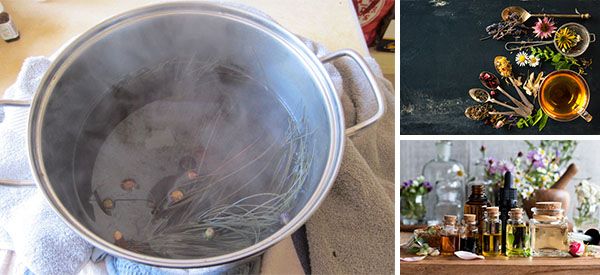
How to Make an Herbal Steam for Congestion and Allergies
Being congested due to allergies, or for any reason for that matter, is not fun at all. The pharmacy may have some solutions for your symptoms, but there are some much more natural strategies that can help. By using herbs, you can successfully treat congestion and allergies.
Here we will discuss the three best methods of creating an herbal steam to combat congestion and allergies, as well as the top five herbs to use for this purpose. There are different ways to source these herbs, from growing your own or purchasing from a greengrocer to buying prepared products.
To get started, let’s first acknowledge that each of us is different and may have unique reactions to different herbs. Always listen to your body and ensure you do not have any discomfort. It is best to start slowly when using any new plant, perhaps smelling it, and touching it to your skin to ensure there are no adverse reactions.
Also, some herbs may take a longer time to take effect, so it may be worth using the product over a long period of time, such as over several days or weeks. You may also find it beneficial to gradually increase your use while monitoring the effects.
The three most effective ways to make an herbal steam to help congestion and allergies:
1. The Easiest Method to Make an Herbal Steam
The first and simplest herbal steam would be to simply make a tea of the herbal ingredients and inhale deeply while drinking the tea. This way you may get the benefit of digesting the medicinal herb also. Peppermint or ginger would be an excellent choice for tea, as each has so many concurrent benefits for congestion as well as digestion.
2. Full emersion herbal steam
This would include using an essential oil diffuser, a humidifier, a hot bath, a sauna or simply a pot on the wood stove, like at my house.
In the case of the essential oil diffuser, this is best for small spaces. It can be a simple and clean way to infuse the air with the medicinal herbs. There are many essential oil products and diffusers available in health food stores, as well as online.
In the case of the hot bath, through experience, I make an Epsom salt concoction using essential oils, which helps break up the oil so that it does not just float on top of the water, which can cause some discomfort and a bit of a mess as well.
3. Direct herbal steam
This may seem a little old fashioned, but when you are really suffering from congestion, it is the best and most effective way. This is a pot of herbs simmering in water on the stove. You need to place your head over the pot with a towel over your head to ensure the most direct contact with the steam.
I recommend staying in this position for 10 to 15 deep breaths, or for as long as is tolerated. Again, pay attention to your comfort. This should only feel good. If it is uncomfortable or too hot, simply take a break and let it cool.
The top five favorite herbs to use for congestion and allergies and where to get them
1. Peppermint (Mentha piperita)
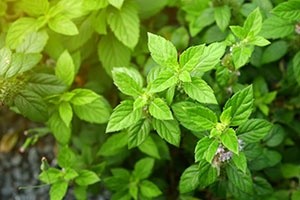 Peppermint is suitable for use in all three of the above herbal steam preparations. Because peppermint contains menthol, it works as a decongestant. In addition, it is thought to have antimicrobial properties which may aid with sinus infection.
Peppermint is suitable for use in all three of the above herbal steam preparations. Because peppermint contains menthol, it works as a decongestant. In addition, it is thought to have antimicrobial properties which may aid with sinus infection.
Peppermint is a widely available herb found as a prepared herbal tea, essential oil, at the greengrocer, and you can grow your own in many climates. Peppermint is a perennial herb and is sometimes grown in a pot due to its prolific spread.
In my climate, USDA zone 3, I harvest mints early in the season before the herbs bloom and before there are too many aphids, for ease of cleaning. I either dry or freeze the mint and as the dried herbs will last longer, I tend to use the frozen herbs first.
2. Ginger (Zingiber officinale)
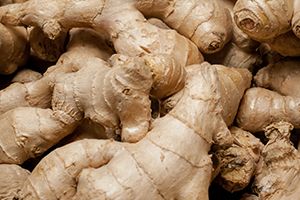 Ginger also works well in all three of the above preparations. Ginger is known to be a natural decongestant and antihistamine.
Ginger also works well in all three of the above preparations. Ginger is known to be a natural decongestant and antihistamine.
I am unable to grow ginger as it grows in USDA zone 8, but ginger is available year-round at the greengrocer, in tea and essential oil form.
I use ginger regularly in cooking and save the ginger peel, again in the freezer, to throw in the direct herbal steam pot as needed.
3. Eucalyptus (Eucalyptus obliqua)
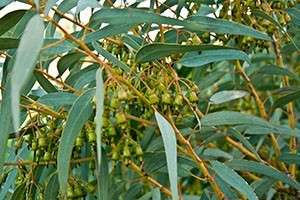
Eucalyptus obviously grows but as a plant, I only know it from the florist and would not recommend using this, as it is often painted and scented.
For me, I use eucalyptus liberally in essential oil form. I put it in Epsom salt for baths, I put it in the pot on the wood stove where its steam infuses the living room, and I use it in the direct steam pot as needed.
Eucalyptus is available in prepared herbal teas as well.
4.Oregano (Origanum vulgare)
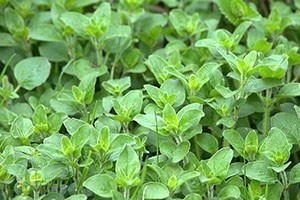 Oregano is a powerful antibacterial and antifungal herb, often found as oil of oregano. Oregano is a giant herbaceous plant that grows bountifully in my garden and which I process similarly to how I process mints.
Oregano is a powerful antibacterial and antifungal herb, often found as oil of oregano. Oregano is a giant herbaceous plant that grows bountifully in my garden and which I process similarly to how I process mints.
A note of caution, I have noticed that oregano will cross pollinate with other plants, I think possibly with a catmint that grows nearby, so the oregano that readily volunteers is not as potent or as flavourful as my original oregano.
I only use oil of oregano in direct steam and sparingly, as a little goes a long way with this strong herb. I do not use it in baths or full-emersion herbal steams, but I do use it liberally in cooking.
5.Thyme (Thymus vulgaris)
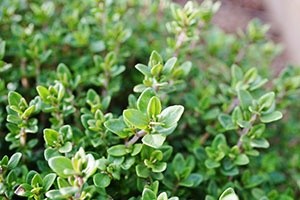 Thyme is the most precious herb in my garden, and as a full-spectrum antimicrobial containing carvacrol, it has many uses beyond the kitchen.
Thyme is the most precious herb in my garden, and as a full-spectrum antimicrobial containing carvacrol, it has many uses beyond the kitchen.
Thyme is a woody, slow-growing perennial herb, that has a truly short window of harvest before it is in full bloom. This may be the reason why thyme essential oil is rather pricey. For this reason, I recommend using thyme effectively but sparingly in direct herbal steam.
There are many more herbs that may be effective in treating congestion and allergies. It may be worth looking into what is available in your area.
A quick note on how to best prepare for your herbal steam:
- Try to ensure that your nasal passages are as clear as possible. You might undertake a nasal rinse such as a net pot. You can use the three strategies in conjunction with an infinite combination of herbs.
- For example, you may have an essential oil diffuser going, while you drink a nice hot cup of peppermint tea in your eucalyptus bath, before you have a thyme, oregano and ginger direct steam over the warm simmering herbs. I hope, after all of that, you do feel better.
My Own Recipe For An Herbal Steam
Ingredients:
- 3 to 4 twigs of oregano, or substitute with 2 to 3 drops of oil of oregano, or 1 to 2 teaspoons of dried oregano
- 3 to 4 twigs of culinary thyme, or substitute with 2 to 3 drops of thyme essential oil, or 1 to 2 teaspoons of dried thyme
- 3 to 4 slices of ginger, or substitute with 2 to 3 drops of ginger essential oil, or 1 to 2 teaspoons of dried ginger or prepared ginger tea.
- Cut herbs from the garden, if using fresh from the garden.Gently rinse oregano and thyme.

- Roughly chop oregano, thyme, and ginger.

- Place in pot on stove. Bring to a boil and allow to simmer for five to ten minutes.

Using a towel or sheet, place your head, or at least your nose and mouth over the steaming pot. Inhale deeply through your nose and exhale through your mouth up to five to ten times, or as much as is tolerated.
To re-use, place liquid with herbs and ginger in a glass or heat-resistant container. Reheat until steaming on the stove or in a microwave up to five to six times a day. Add more liquid if necessary. The liquid should remain effective for three to four days.
You may also like:
 How to Make an Arthritis Tincture
How to Make an Arthritis Tincture
Erratic Blood Sugar? Never Eat This Veggie (Video)
10 Teas That should Always be In Your Cupboard
How to Use Avocado Seeds to Lower Blood Pressure and Cholesterol






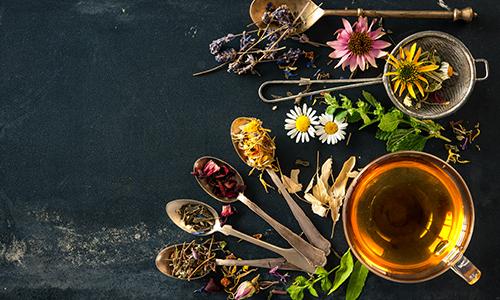
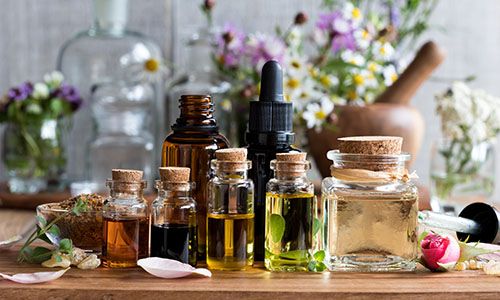
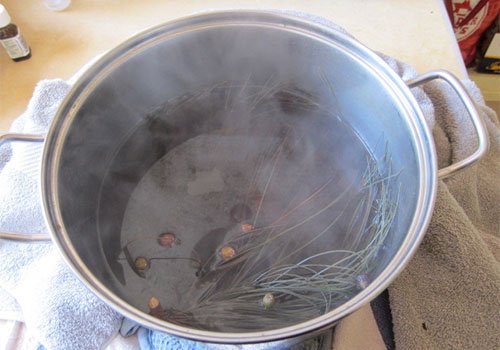
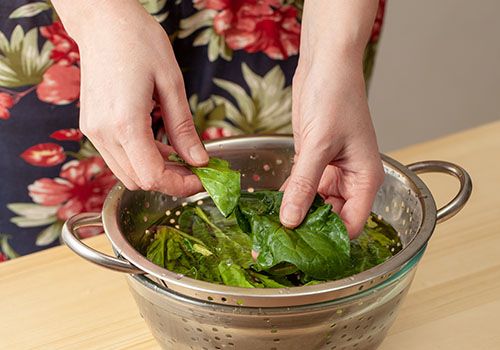
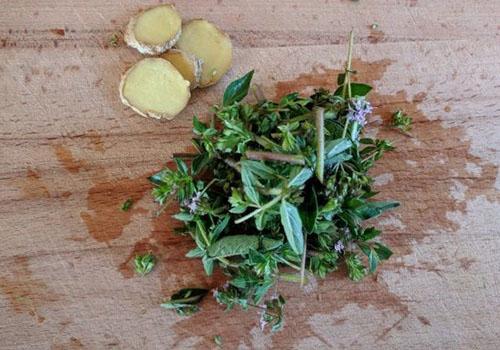
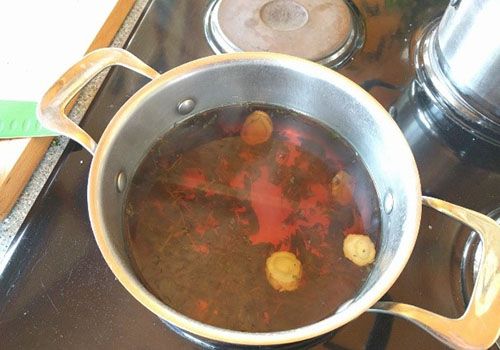
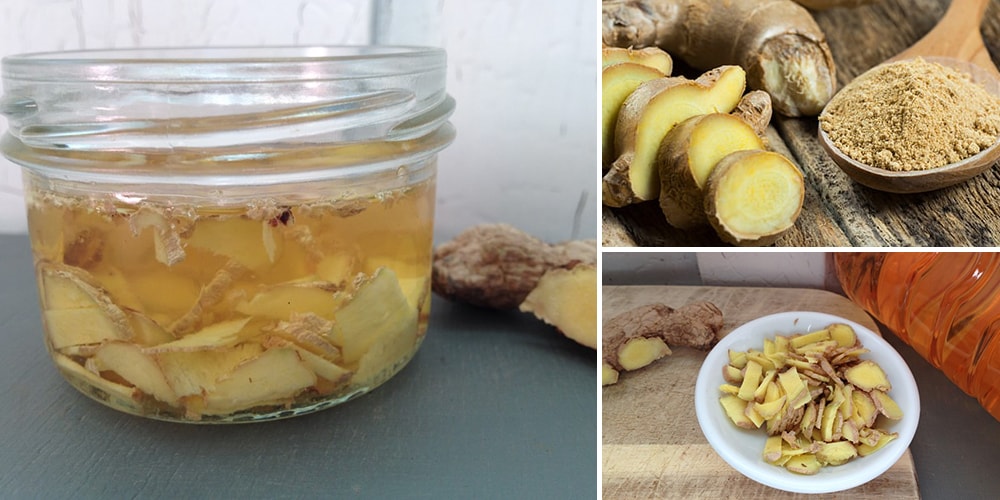
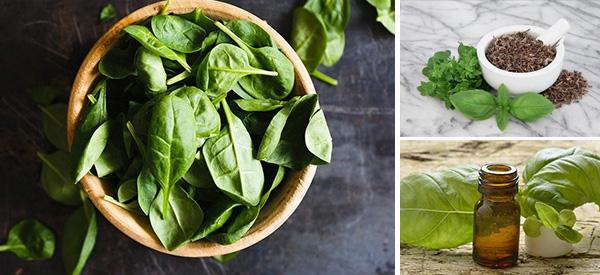
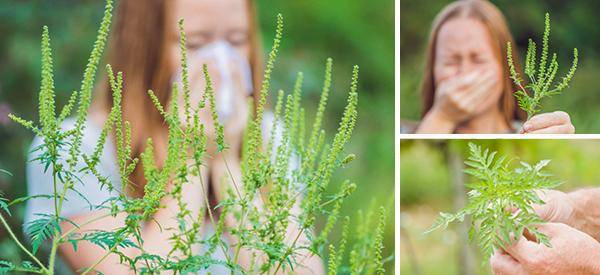
I love your posts. Natural and your teaching presentation is so good. I read everything you post and as someone who has used some herbs for many years, I have learned so much these past few months. Your book is in my phone whenever I do a walk in the woods and fields. Thank you so much.
Hi Denise,
Thank you so much for your comment.
We really appreciate your kind words.
God bless!
The seed heads from oregano are great for tea and steaming and so very easy to harvest. Just let the plants go to seed and once they are browned by frost, harvest (stems and all), dry and store in jars or zip bags. I place the seeds with stems into the water, no need to waste time separating the seeds out. I’ve been using the seeds for years and the oils seem to be more concentrated than the leaves. Tea with a little honey is lovely and soothing.
Hi Lisa,
Thank you so much for your comment and for your piece of advice as well.
It seems very interesting!
God bless!
For the las t 2 years I have been using peppermint as a decongestant for my lungs. Itried putting it in hot water and breathing it, but it burns off quickly. I started putting a drop of peppermint oil on the inside of a surgical mask and it works like a dream. If you get too much on the mask, you can pull it away from your face a bit or hold in your hand close to your nose and mouth.. I do this everyday and have not had a cold for the 2 inters since I started it. Also, peppermint is antiviral, antifungal and antibacterial. I use it whenever I have been around a lot of people in stores or elsewhere.
wow – thanks for your post. I will definately have to try this on a mask.
Hi Jensen,
Thank you so much for your comment.
The mask procedure is indeed an interesting alternative.
God bless!
Thank you!
Hi Wendy,
Thank you so much for your comment as well.
We truly appreciate it.
God bless!
I am definitely trying all of these tips. I have been suffering with seasonal allergies in Middle Tennessee for months the past week have developed an infection. Nicole I am such a fan! I have your book and am loving learning with my backyard medicine garden and learning about all my backyard medicinal plants. I’ve made many of your salves, tinctures, and infusions. Blessings on you and yours!
Hi Christi,
Thank you so much for your comment and for your kind words as well.
It is very much appreciated! We are happy that you chose the natural healing path.
God bless!
I would love to know more. I always knew god gave of gifts of our land.
Carol are you referring to the idea that God gives us the medicine we need on our land? I’ve heard that from many local herbalists. If so, you could begin with studying the native/ wild plants around you; sadly, most refer to many native medicinal plants as weeds.
Is this information in the book?
Hi Mikaela,
Thank you for your interest in our work.
You will find more information in the book about the herbs used to make the herbal steam. However the recipe is available only in this article.
God bless!
[…] How to Make an Herbal Steam for Congestion and Allergies […]
[…] How to Make an Herbal Steam for Congestion and Allergies […]
This is a wonderful article. Thank you. I would like to add that I have been using a steam of Comfrey for chest discomfort and congestion for years. It works wonderfully. I do not take Comfrey internally but its many uses and benefits otherwise are bountiful. Currently, I have a good supply of Eucalyptus, so add that to the Comfrey but will certainly add the herbs noted here and in different combinations.
[…] How to Make an Herbal Steam for Congestion and Allergies […]
[…] How to Make an Herbal Steam for Congestion and Allergies […]